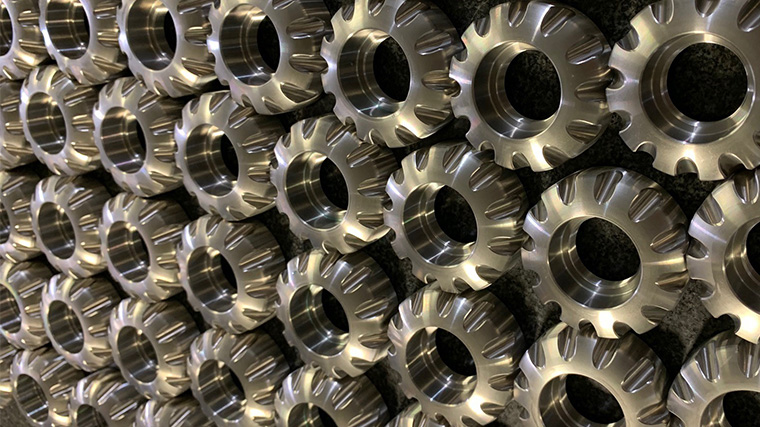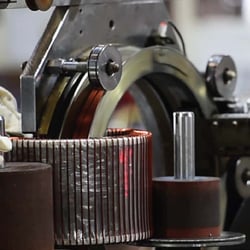Manufacturers in life sciences have a strong appetite for smart manufacturing, and many are evaluating production scheduling software for medical device. We’re not surprised since medical device manufacturing is highly complex when it comes to production planning and scheduling. Supply chain professionals in med device face a wide variety of production processes, regulatory considerations, diverse materials and suppliers, and potentially thousands or tens of thousands of SKUs. These complexities translate to exponentially more production scheduling variables than other manufacturing sectors. When it's time to switch to production scheduling software for medical device manufacturing, more variables means many more models required to automate scheduling processes.
If your company is considering making the switch or even ready to start implementation, it’s not enough that the solution can handle all the variables to run your business. You need a starting point with strong, accurate models loaded into the system. An effective smart manufacturing implementation team will work closely with your production schedulers to document and capture your business’ scheduling models and configure the system correctly with them.
While the scheduling models in your system should reflect all variables, what are some of the processes and models your production scheduling software for medical device should be able to handle?
.png?width=500&name=Production%20Scheduling%20Software%20for%20Medical%20Device%20-%20Why%20Good%20Models%20Matter%20(with%20quote).png)
Scheduling Models for Part Production
Does your company manufacture medical devices assembled from parts it produces or procures? The models in your production scheduling software for medical device should reflect all the parts made from diverse materials. For example, there might be parts produced on CNC machines, 3D printers, casting equipment, or molding equipment. There might also be parts made on machines to cut, bend, and shape metal sheets. Your company might also need plastic parts from injection molding equipment. Moreover, today's advanced medical equipment often includes electronic parts like circuit boards from pick-and-place machines, wave soldering machines, and circuit test equipment. Your production scheduling system and the models in it should handle part production to a degree that the production scheduler can optimize and respond to changes even when a CNC or other machine for a single part has unplanned downtime.
Scheduling Models for Metals
If you're producing metal parts for medical device manufacturing, your production scheduler knows that every machine has different scheduling rules, and most equipment is operator-dependent (especially CNC machines). For example, the number of machines an operator will be assigned to usually depends on part cycle times. One operator can usually handle three to five machines if cycle times are long. It might be only two to three machines for short cycle time operations. Furthermore, setup and load times vary dramatically depending on if there's tool automation to load and unload pallets. This nuance alone can impact capacity and therefore scheduling models.
The models in your production scheduling software for medical device should capture these nuances and automatically optimize based on setup and load times, to stagger operations and minimize downtime.
Check out this video that shows how production schedulers in life sciences manufacturing optimize the production schedule in one popular production scheduling system:
Scheduling Models for Plastics and Plastic Parts
Plastic part production typically requires less operator interaction. In most situations, the plant can produce parts by the operator executing setup and changeover operators between orders. Carefully planned models can empower the production scheduler to minimize lost capacity from changeovers and let them make strategic choices to sequence or combine orders. If the company produces a part as a stock item, it can run large batches for efficiency. However, it might not want the larger inventory and longer turns for the material manager. The models in your production scheduling software for medical device should reflect these elements and automatically optimize the production schedule based on the company’s strategic preferences about order sizes and inventory turns.
Scheduling Models for Electronics
Production scheduling requirements for electronics usually differ significantly from metals and plastics. Components for electronics can change regularly, may require multiple suppliers, might reflect many product designs, and typically require track and trace functionality to avoid recalls. Once operations produces the electronic parts, they might need firmware or software. The models in your production scheduling software for medical device should address the alignment between material planning and capacity planning, so that the schedule to run machines conforms to when components are in-stock and available.
Scheduling Models for Assembly
When it comes to production scheduling for assembly, the models in your production scheduling software for medical device may vary widely depending on the level of automation for assembly. For highly automated assembly, your company can establish models based on sub-assemblies feeding to the next operation with no buffer, or based on work-in-progress locations holding sub-assemblies until a process is complete and moves to the next operation. Depending on which production scheduling software your company intends to use, it might be capable of scheduling the start of an operation before the preceding operation is complete based on a mathematical formula, known as partial completion operation start.
Scheduling Models for Labor Management
Labor management isn’t just a consideration for manual assembly – it’s also a concern for automated assembly. Scheduling models for automated assembly can link labor requirements directly to machine use. Models for manual assembly should handle variable labor requirements by space, skill, and production volume. A company with large, complex assemblies might even incorporate small progress deadlines into the models to preclude schedule delays. These are just a few strategies medical device companies employ when creating scheduling models for their production scheduling system.
See how you can adjust the production schedule for labor shortage in life sciences manufacturing:
Making the Most of Production Scheduling Software for Medical Device
Even if your specific operation has only a few of these considerations, your production scheduler still incorporates a lot of variables to create a schedule that adheres to business rules and maximizes capacity. Production scheduling software for medical device equips your production scheduler to handle complexities that don’t exist in other manufacturing sectors and manage a finite capacity schedule. If you’re thinking about which production scheduling system is right for your company or is working on system implementation, three things that should be top of mind right now:
- Find out if the production scheduling system can handle all the variables and complex models typical for a medical device manufacturing operation;
- Decide if creating a global template will help your company save time and money and accelerate time-to-value; and
- Create models specific for your business and operations – it’s ok to use industry templates as a reference point, but no other business is exactly like yours.

.png?width=500&name=Production%20Scheduling%20Software%20for%20Medical%20Device%20-%20Why%20Good%20Models%20Matter%20(with%20quote).png)






